Full Color Label Printing with Epson’s ColorWorks TM-C3500
Historically, color label printing has been either too cost prohibitive to do oneself or the quality was lacking to make it worth doing. With the Epson ColorWorks TM-C3500 both of these challenges are resolved.
With the ColorWorks C3500, you can easily customise and print your own colour labels. Whether it’s printing packaging labels with colourful logos and pictures or tickets and ID cards with important barcodes and product information, this printer ensures you can print it all from one machine. It also helps you conform with GHS international chemical labelling guidelines, as labels can be printed on-demand without using pre-printed templates.
Sato’s CLNX Series: Beyond Speeds & Feeds
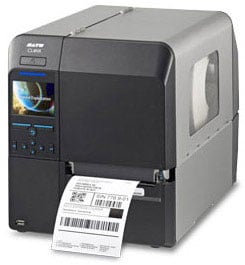 While many companies focus on criteria such as throughput and print resolution when selecting a thermal printer, factors like how quickly/easily a printer can be integrated, how rapidly media can be loaded, and how easily the printer can be serviced have an even greater impact on operational costs. Even small improvements in operational efficiency can positively affect a facility’s equipment up-time or ontime labeling performance. The SATO CLNX Series industrial thermal printer, available in a 4” (CL4NX) or 6” (CL6NX) model, was engineered with problem solving features in mind.
While many companies focus on criteria such as throughput and print resolution when selecting a thermal printer, factors like how quickly/easily a printer can be integrated, how rapidly media can be loaded, and how easily the printer can be serviced have an even greater impact on operational costs. Even small improvements in operational efficiency can positively affect a facility’s equipment up-time or ontime labeling performance. The SATO CLNX Series industrial thermal printer, available in a 4” (CL4NX) or 6” (CL6NX) model, was engineered with problem solving features in mind.
SATO’s goal was to engineer a thermal printer that is easier to integrate, operate, and maintain. If a printer requires a lot of configuration, jams frequently, produces poor quality labels, or is difficult for operators to quickly change out labels, ribbons, print heads or platen rollers, the downtime can be costly in terms of both productivity and expense.
Honeywell ESD
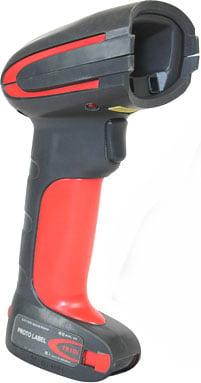 You often hear manufacturers reference ESD when discussing scanners. In fact, on the Honeywell Granit datasheet you’ll see under the “Environmental” section on the back: ESD. ±20Kv air discharge, ±8KV contact discharge
You often hear manufacturers reference ESD when discussing scanners. In fact, on the Honeywell Granit datasheet you’ll see under the “Environmental” section on the back: ESD. ±20Kv air discharge, ±8KV contact discharge
What does it mean and why is it important?
- ESD – electrostatic discharge – is the sudden flow of electricity between two objects resulting from two conditions:
- Air Discharge. A high electrostatic field between two objects when they are in close proximity.
- Contact Discharge. Direct contact transfer of electricity between two objects at different potentials. This is similar to the above except you are injecting the shock directly into the computer. A typical example of this would be 20KV Air Discharge into a scanner vehicle mount. The mount in turn passes an 8KV shock to the scanner.
- Kv is a kilovolt – or 1,000 Volts. And a volt is…um…a unit of measurement to define voltage. Think of voltage, using a plumbing analogy, as water pressure.
Deliver an Exciting, New Customer Experience with Datalogic’s Joya X1
 Datalogic’s Joya X1 self-shopping solution is now available to US customers. Joya is a purpose-built device for shoppers that is tailored to provide the best self-shopping experience. It offers cutting-edge technology and advanced performance in an ergonomic form factor that is easy to use. Using Joya instead of a smartphone allows shoppers to:
Datalogic’s Joya X1 self-shopping solution is now available to US customers. Joya is a purpose-built device for shoppers that is tailored to provide the best self-shopping experience. It offers cutting-edge technology and advanced performance in an ergonomic form factor that is easy to use. Using Joya instead of a smartphone allows shoppers to:
- Scan coupon barcodes on their smartphone screen
- Shop faster using optimized barcode technology instead of the smartphone camera
- Send and receive calls and texts while shopping
- Conserve phone battery power
- Prevent phone damage from accidental drops while shopping
For retailers, Joya is a multi-purpose tool that can be used to enhance the shopping experience and increase operational efficiency. Retailers can use Joya to:
- Implement fast and efficient Queue-busting during peak times
- Execute retail inventory functions such as:
- Price checks
- Stock checks
- Restocking
- Markdowns
Three Key Concerns for Barcode Verification
 When you hear the term verification in regards to printing barcodes we are referring to much more than just making a readable barcode. Verification is a much more specific requirement for the quality of a 1D barcode or 2D symbol according to an agreed-upon quality standard. Not meeting these standards with your customers, be it Walmart or the DoD, will end up costing you in fines and time lost.
When you hear the term verification in regards to printing barcodes we are referring to much more than just making a readable barcode. Verification is a much more specific requirement for the quality of a 1D barcode or 2D symbol according to an agreed-upon quality standard. Not meeting these standards with your customers, be it Walmart or the DoD, will end up costing you in fines and time lost.
Lucky for all of us we have manufactures like Microscan who make verification easy so you can catch the barcodes that don’t meet the mark before they ever leave your facility. There are essentially 3 main things that can go wrong when printing a barcode that will lead to failing verification.
Zebra Launches New AP 8533 802.11ac Wave 2 Access Point
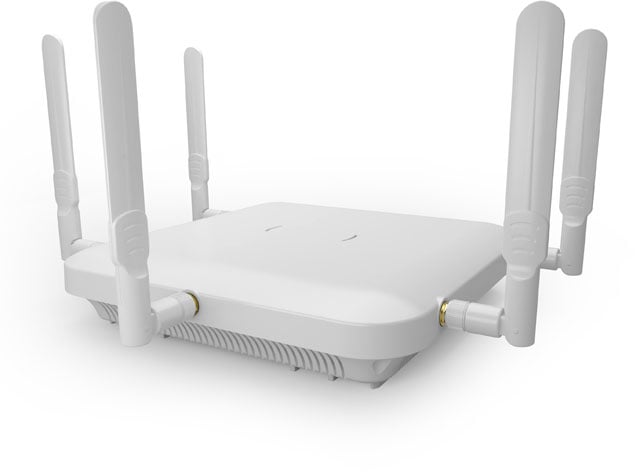 Ever increasing demand to support more mobile devices and applications, as well as customer engagement, redefines the network year after year. Jump to the front of the line with the new Zebra AP 8533. This innovative access point features true 802.11ac Wave 2 capabilities and Zebra Triple Sensor technology to support your growing business and customer needs. Personalize the shopping experience with Bluetooth Low Energy (BLE) beacons, secure the network from existing and new threat vectors, and deepen network visibility of applications running over your wireless LAN. With AP 8533’s advanced capabilities, you can prevent “upgrade fatigue”.
Ever increasing demand to support more mobile devices and applications, as well as customer engagement, redefines the network year after year. Jump to the front of the line with the new Zebra AP 8533. This innovative access point features true 802.11ac Wave 2 capabilities and Zebra Triple Sensor technology to support your growing business and customer needs. Personalize the shopping experience with Bluetooth Low Energy (BLE) beacons, secure the network from existing and new threat vectors, and deepen network visibility of applications running over your wireless LAN. With AP 8533’s advanced capabilities, you can prevent “upgrade fatigue”.
HIGH-DENSITY NETWORK
Zebra’s true 802.11ac Wave 2 access point, along with the high-density optimization in WiNG 5, maximize the value of MU-MIMO for high-density networks. The AP 8533 supports hundreds of wireless clients and concurrent transmissions critical for any enterprise.
Microscan Announces the Release of WebLink 1.1 and New Features for MicroHAWK Barcode Readers
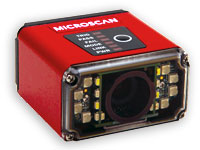 Microscan has announced the release of WebLink 1.1 – the latest version of the world’s first web-based barcode reader setup and control interface – supporting several new feature upgrades for the company’s MicroHAWK Barcode Reader platform.
Microscan has announced the release of WebLink 1.1 – the latest version of the world’s first web-based barcode reader setup and control interface – supporting several new feature upgrades for the company’s MicroHAWK Barcode Reader platform.
Part of the revolutionary MicroHAWK platform launched in September 2015, Microscan introduced WebLink as the first ever web-based barcode reader interface. WebLink software is stored on the MicroHAWK barcode reader, rather than external equipment. The WebLink interface is accessed through a web browser by navigating to the barcode reader’s IP address using any web-enabled device on the local area network (LAN). WebLink’s open protocol framework eliminates integration hassle and device incompatibility across factory networks, IT equipment, and control systems. Since no software is installed on equipment used to control MicroHAWK readers, WebLink does not require the intervention of IT to facilitate installation or upgrades. In addition, custom reader settings can be saved as WebLink job files to the MicroHAWK reader’s internal memory or to external devices and are completely portable to new integration environments and equipment.
Economical Desktop Label Printing with Honeywell’s PC42t
 Setting the standard in convenience and ease of use, Honeywell’s PC42t brings high quality, affordable label printing to any desktop. Compact enough to fit in any environment while being one of the most user-friendly label printers on the market today makes the PC42t the perfect solution for light-duty labeling in a variety of industries.
Setting the standard in convenience and ease of use, Honeywell’s PC42t brings high quality, affordable label printing to any desktop. Compact enough to fit in any environment while being one of the most user-friendly label printers on the market today makes the PC42t the perfect solution for light-duty labeling in a variety of industries.
Able to print on media up to 4.3″ wide and a host of connectivity options the PC43t can easily be dropped into any environment. Its affordable price and modern features make it a smart solution for the small or medium business looking to improve productivity in label making operations.
Key Features
- An economical solution for light-duty thermal printing applications.
- Supports a wide range of media, including 12.7 mm (1/2 in) or 25.4 mm (1 in) ribbon cores (depending on the model).
- Industry-standard connectivity includes USB host and device, and options for Ethernet, parallel and serial communications.
- Easy to use, with a quick-opening design for media replenishment.
- Supports ESim (EPL), ZSim (ZPL II) and Direct Protocol (DP) print languages for maximum compatibility
Barcodes Inc. Recognized as HandiFox Partner of Q2 2016
 HandiFox Partner Program recognizes HandiFox partners for their productivity, outstanding efforts and achievements throughout a given quarter. HandiFox has named Barcodes Inc. as their Q2 2016 Best Partner and have dedicate a blog post to our long-term partnership.
HandiFox Partner Program recognizes HandiFox partners for their productivity, outstanding efforts and achievements throughout a given quarter. HandiFox has named Barcodes Inc. as their Q2 2016 Best Partner and have dedicate a blog post to our long-term partnership.
As a provider of barcode, mobile computing, and RFID solutions, we are always looking for efficient and effective solutions to integrate inventory capabilities for our customers. Serving all types of businesses, we often comes across customer’s needs to integrate with QuickBooks or other platforms to improve inventory capabilities. This is where our relationship with HandiFox has been essential.
Honeywell’s Presentation Mode for Scanners
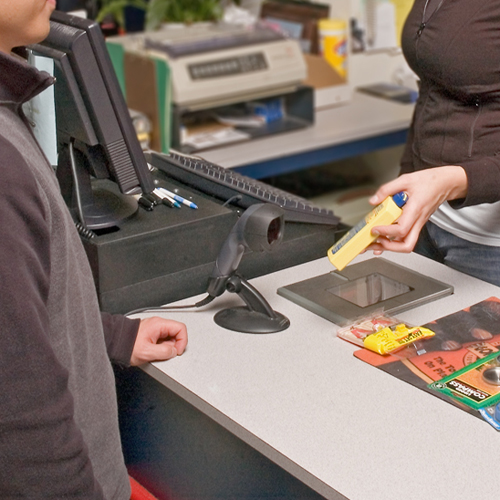 Presentation mode gives customers the ability to scan barcodes without having to squeeze any triggers. You “present” the barcode to the scanner and it scans. Presentation mode uses ambient light and scanner illumination to detect barcodes.
Presentation mode gives customers the ability to scan barcodes without having to squeeze any triggers. You “present” the barcode to the scanner and it scans. Presentation mode uses ambient light and scanner illumination to detect barcodes.
There are two types of Presentation Modes:
- Presentation Mode. In this mode the scanner’s LEDs remain dim until a bar code is presented to the scanner. When a barcode is presented & detected the LEDs turn up, the aimer turns on, and the scanner scans the bar code. This mode tends to do a better job with bad barcodes.
- Streaming Presentation Mode: The scanner’s LEDs remain fully on and the scanner is always scanning. When a barcode is presented the aimer turns on and the barcode is “scanned”. This mode tends to scan good barcodes faster. In Streaming Presentation Mode there is even a Normal flavor and an Enhanced flavor.
- Normal = Good scan speed and the longest working ranges.
- Enhanced = Fastest scan speed but less range.




